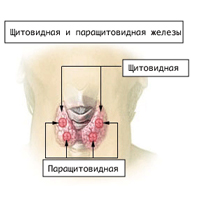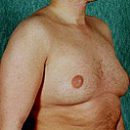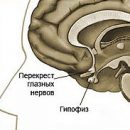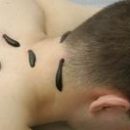In case of hypoparathyroidism in the body, the production of the hormone of the parachitoid gland is reduced, which is accompanied by a decrease in blood calcium level. Clinically disease is manifested by painful convulsions, irritability, impairment of memory and constant depression.
Content
Hypoparatihiosis or hypoparatyosis is a disease in which in the body for any reason is not enough to hormone parathyroid glands (paratyrin) or the sensitivity of the tissue receptors to this hormone is disturbed, resulting in the function of the pararathgamon. This condition is accompanied by attacks of tonic convulsion.
Causes of hypoparatyroid
The cause of the hypoparathyroidism is inflammatory processes in parachitoid glands, hemorrhages in parachite glands as a result of traumatic damage to the neck, strikhenin, lead oxide, vitamin D oxide, in pregnancy and breastfeeding, with a violation of calcium suction in the intestine, when exposed to radiation.
Metastasis of malignant tumors in parachitoid glands can be given to hypoparatiosis. Sometimes the decrease in the function of the parachitoid glands may be congenital when the parathyroid gland is underdeveloped in the intrauterine period of development of the fetus.
Hypoparatiosis develops with various autoimmune processes:
- Primary hypothyrosis
- Chronic adrenal cortex failure
- Polyendocrine autoimmune syndrome
- Family endocrinopathy
But most often the reason for the hypoparathios is surgical interference on the thyroid gland or other Neck organs, when the parachitoid glands are accidentally damaged. Especially often this happens with total (full) removal of the thyroid gland over the thyroid cancer.
Basic symptoms of the disease
 The insufficiency of the parathgamon (paratyrine) or a decrease in the sensitivity to the receptor it leads to a violation of calcium and phosphorus exchange. Calcium absorption in the intestine decreases, the elimination of calcium from bone tissue decreases, and the amount of calcium in the blood drops. At the same time in the blood increases the number of phosphates. Reducing the amount of calcium leads to an increase in neuromuscular excitation, and tonic convulsions are developing.
The insufficiency of the parathgamon (paratyrine) or a decrease in the sensitivity to the receptor it leads to a violation of calcium and phosphorus exchange. Calcium absorption in the intestine decreases, the elimination of calcium from bone tissue decreases, and the amount of calcium in the blood drops. At the same time in the blood increases the number of phosphates. Reducing the amount of calcium leads to an increase in neuromuscular excitation, and tonic convulsions are developing.
With a long flow of the process, hypotrophy and muscle atrophy may develop. At the beginning of the disease, a patient appears complaints about numbness and fossilization of the limbs, feeling «crawling geasses», tingling, tide heat to hand or legs, sensations «spasm» muscle. All these manifestations are enhanced under the influence of overheating, cold, exercise, in infectious diseases, mental tension.
Over time, painful convulsions appear in symmetric muscle groups. Highly often appear characteristic cramps in hands, the so-called «Hand obstever». In the lower limbs, convulsions are manifested in the form «Konsky foot», When the fingers are pressed to the back of the foot, the patient can not be on the entire foot, it is accompanied by the tension of the shin and hips muscles.
If convulsions apply to the face, arises «Fish Rot» Due to the voltage in the muscles around the mouth, «Sardonic smile», And when distributing seizures on chewing muscles, their painful stress may occur, leading to a convulsive compression of the jaws (trism). The muscles of the abdomen and chest suffer less often, however, with their long-term convulsive voltage, there is a breakdown of breathing, which may be life-threatening. The severity of the state usually depends on the level of calcium in the blood.
Eliminate lungs, medium and severe degrees of hypocalcemia (decrease in the amount of calcium in the blood). If hypoparatiosis occurs heavily and for a long time, changes are joined in the central nervous system (irritability, worsening memory, depression). Increased intracranial pressure and headache occurs, unpleasant feelings in the eyes when looking at the light. Sometimes it is accompanied by the emergence of convulsive seizures similar to the epileptic seizure. From the side of the vegetative nervous system of violations are manifested by rapid heartbeat, sweating, abdominal pain, diarrhea.
Chronic hypoparatiosis is manifested by changes in skin:
- dry skin and peeling
- Nail fragility
- hair loss
- Destruction of teeth
- characteristic changes of the enamel of teeth
Inflammatory processes appear in the mucous membrane of the eye (conjunctivitis, keratitis, blepharitis), often the cataract develops quite often.









